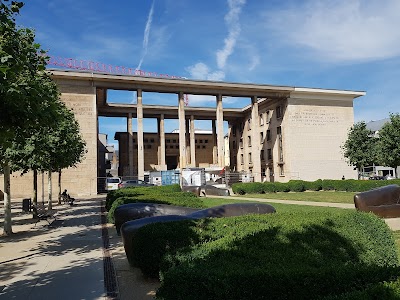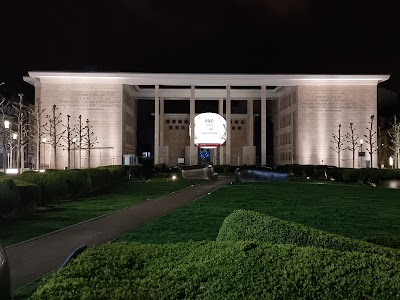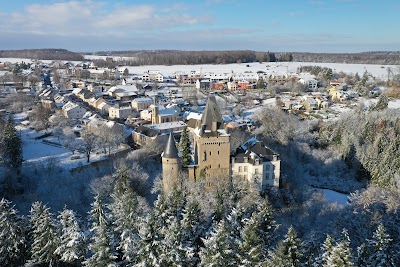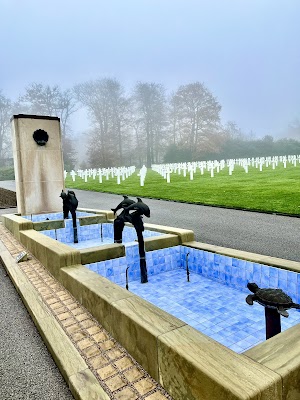National Resistance Museum (Nationalmuseum vum Widerstand)
Overview
Nestled in the picturesque Canton of Redange, Luxembourg, the National Resistance Museum (Musée National de la Résistance) holds a significant place in the heart of Luxembourg's history and the collective memory of World War II. This remarkable institution was established to honor and remember those who fought, suffered, and died during the German occupation. The museum is a poignant reminder of the enduring values of freedom and human dignity that emerged from this dark chapter in history.
The origins of the National Resistance Museum date back to the aftermath of World War II, when Luxembourg sought to commemorate the bravery of its resistance fighters. These remarkable individuals, often ordinary citizens, played crucial roles in subverting Nazi control, aiding Allied forces, and upholding the spirit of liberty in their oppressed homeland. Officially inaugurated in 1984, the museum stands as a testament to the legacy of those who resisted tyranny and fought for the country's liberation.
As visitors step into the museum, they are greeted by an array of meticulously curated exhibits that vividly depict life during the occupation. The collection encompasses original artifacts, including uniforms, weapons, and personal items used by resistance fighters. These tangible pieces of history are complemented by interactive displays and multimedia presentations, enriching the educational experience. Personal stories conveyed through letters and diaries offer intimate glimpses into the courage and hardships faced by the Luxembourgish resistors.
One of the museum's central exhibitions focuses on the clandestine activities of the resistance. From acts of sabotage to intelligence gathering, these brave actions significantly hindered Nazi operations and provided vital support to the Allied forces. The museum highlights notable figures like Josy Braun and Victor Bodson, whose courage and ingenuity symbolize the broader resistance movement. Their stories not only showcase individual heroism but also underscore the collective effort that defined the era.
For those interested in the impact of war on everyday life, the museum provides an insightful look into the oppressive measures enacted by the Nazis and the various forms of civilian dissent. Exhibits detail the harsh realities faced by Luxembourg’s citizens, including forced conscription, deportation, and the persecution of Jewish communities. Through photographs, documents, and firsthand accounts, visitors gain a deeper understanding of the severity of the occupation and the indomitable human spirit that sought to defy it.
The significance of the National Resistance Museum extends beyond its historical exhibitions; it serves as an educational hub for younger generations, ensuring that the stories of resistance and the atrocities of war are not forgotten. The museum frequently hosts school groups, providing guided tours and tailored educational programs that foster a greater appreciation for history among students. Additionally, special temporary exhibitions and events are regularly organized, reflecting ongoing research and contemporary themes related to resistance and human rights.
Beyond its educational role, the museum stands as a symbol of remembrance and reflection. Memorials within the museum grounds honor those who perished and acknowledge the sacrifices made during the war. Each year, the museum commemorates key dates related to Luxembourg’s wartime history, providing a solemn space for reflection and community unity.
An interesting fact for visitors is the museum's commitment to preservation and accessibility. Housed in a historic building that has been carefully restored to maintain its architectural integrity, the museum also features state-of-the-art facilities. Information is available in multiple languages—Luxembourgish, French, German, and English—ensuring that a broad international audience can engage with the exhibits.
To enhance their visit, tourists can explore the scenic surroundings of Redange, which offers beautiful landscapes and a peaceful atmosphere, providing a stark contrast to the war-torn history captured within the museum’s walls. Nearby cafes and shops invite leisurely reflection on the profound exhibits experienced during the visit.
In conclusion, the National Resistance Museum in the Canton of Redange, Luxembourg, offers an immersive and educational journey through one of the most challenging chapters in Luxembourgish history. It serves as a tribute to the resilience of those who fought against oppression and as a vital resource for future generations to learn from the past. Whether you are a history buff, a student, or someone who values the lessons of courage and unity, a visit to this museum promises to be both enlightening and deeply moving.







